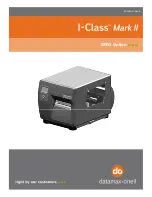
Services Menu
WiLink-I Modular Base Station System Manual
141
must be defined in the system. When it becomes a Permanent SU, the required
services can be assigned to it.
In Quick Mode, an undefined SU that is authenticated by the system will be added
to the database of the NPU (NMS) as Temporary. The subscriber will be able to use
only services based on the Default Service Profile(s). It is possible to define up to
two Default Service Profiles: one for PPPoE services and one for L2 or Voice
services (note that L2 service can support also Voice services). When the SU is
defined as Permanent and services are assigned to it, it will be able to use the
defined default services.
When changing the status of an SU from Permanent to Temporary, the SU must
be reset to perform a new network entry process for getting the correct Default
Service.
4.10.1.5
Using VLANs and VPLs
VLANs can be used for creating within the WiLink-I network virtual groups of
multiple end-users (stations) belonging to the same organization (Subscriber).
They may also be used to differentiate between different end-users (stations)
connected to the same SU.
In the backbone, VPL ID (Virtual Private Link ID) is used. VPL is a virtual
connection between two points on the network, such as a base station and a
service provider or corporate network, identified by the VPL ID, with functionality
that is similar to VLAN ID (VLAN on the backbone network). Typically, it is used to
separate between different traffic types (e.g. Data and Voice), or traffic to/from
different ISPs or different corporate networks.
If the VPL ID is None (No VPL ID) and VLAN Transparency Mode is Off, frames
arriving from the infrastructure side with a VLAN ID tag will be discarded. Tagged
frames arriving from the wireless domain will be forwarded without a VLAN tag,
unless 802.1p Priority Marking is used. If 802.1p Priority Marking is used, tagged
frames will be forwarded with VPL ID = 0 and the defined Priority Marking Value.
If the VPL ID is other than None (applicable only if VLAN Transparency Mode is
Off), all untagged frames forwarded to the network will be tagged with the VPL ID.
The VLAN ID in tagged frames arriving from the wireless network will be replaced
by the VPL ID.
The guidelines that should be followed when defining VPL ID are:
¢
Several Service Profiles may share the same VPL ID. However, the following
rules must be met:
Summary of Contents for WiLink-I 3000
Page 1: ...System Manual WiLink I Modular Base Station SW Version 2 5 June 2006 ...
Page 16: ......
Page 20: ......
Page 24: ...4 System Description Chapter 1 System Description Figure 1 1 WiLink I System Architecture ...
Page 42: ......
Page 74: ......
Page 214: ......
Page 240: ......
















































